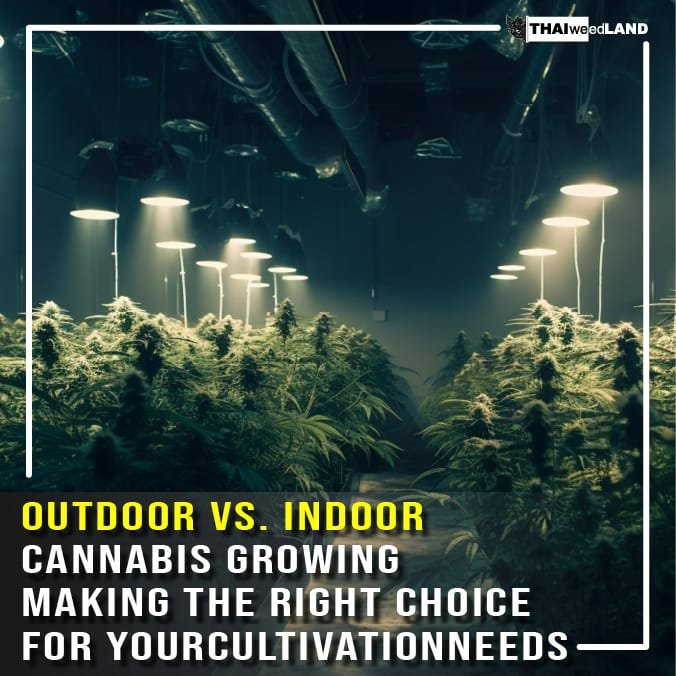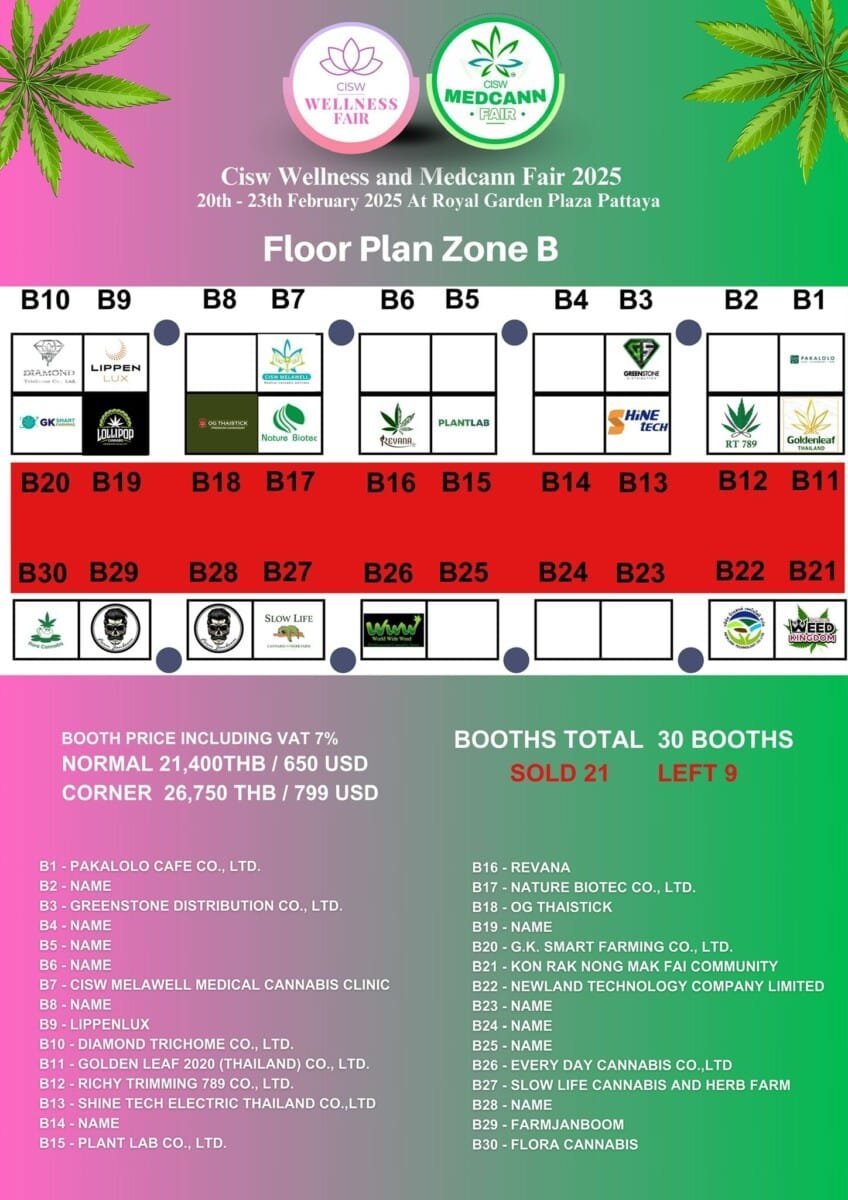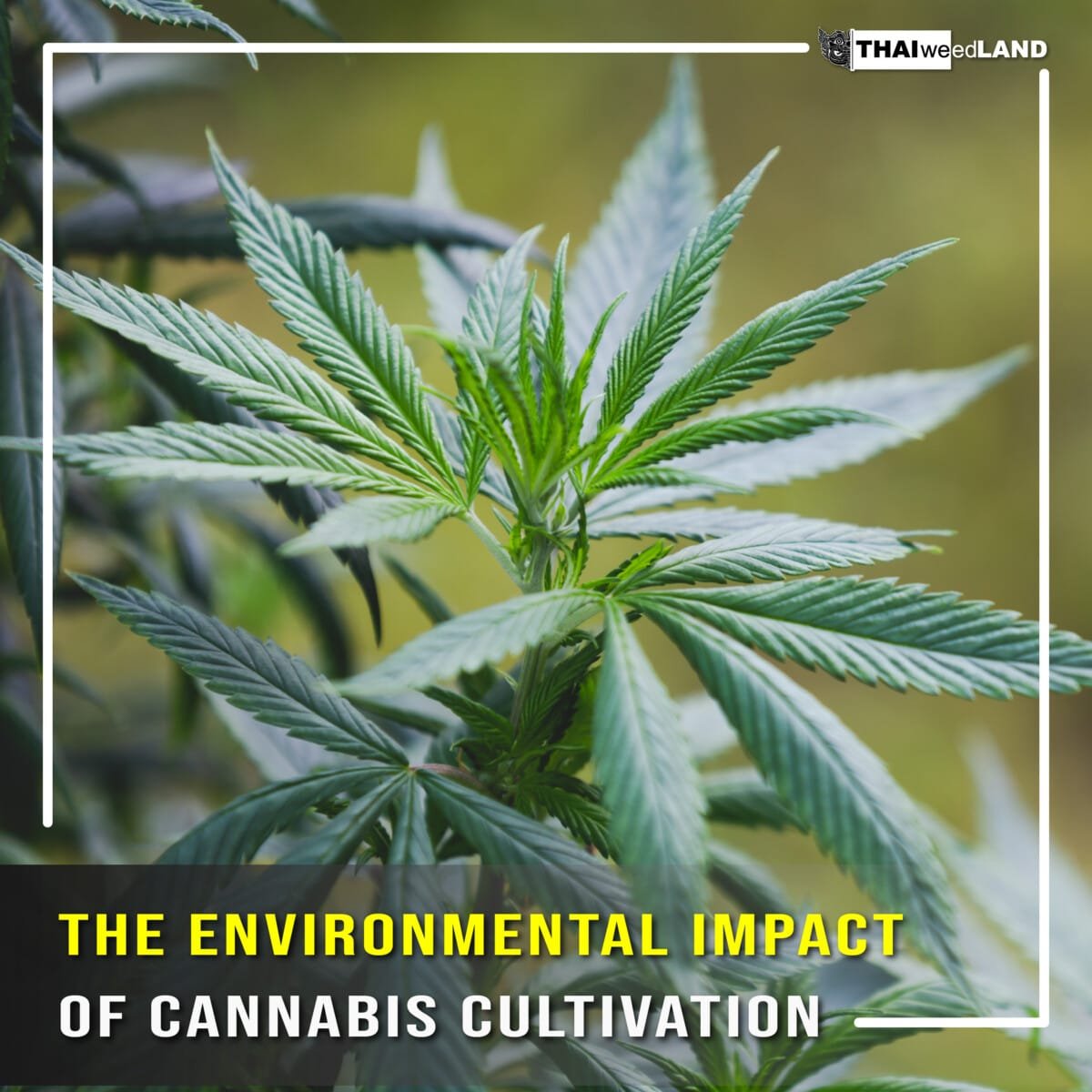When it comes to growing cannabis in Thailand, one of the first decisions you'll need to make is whether to cultivate your plants outdoors or indoors. Both methods have their advantages and disadvantages, and the choice ultimately depends on your specific preferences, resources, strains, and environmental factors. Let's explore the pros and cons of outdoor and indoor cannabis growing to help you make an informed decision about farms
Outdoor Cannabis Growing: Embracing Nature’s Bounty
Growing cannabis outdoors offers several benefits, chief among them being the abundance of natural sunlight. Sunlight is free and provides the full spectrum of light wavelengths that cannabis plants need to thrive. Outdoor cultivation also allows for larger plant sizes and higher yields, as plants have more room to spread out and access to unlimited space and fresh air.
Additionally, outdoor cultivation tends to be more cost-effective, as you won't need to invest in expensive lighting equipment or climate control systems. This makes it an attractive option for beginners or those looking to minimize their expenses.
However, outdoor cultivation also comes with its challenges. Outdoor growers must contend with unpredictable weather conditions, pests, and potential theft or security issues. Moreover, outdoor cultivation may not be feasible for those living in urban areas or regions with strict regulations on cannabis cultivation.
Indoor Cannabis Growing: Harnessing Controlled Environments
For indoor cannabis allowing them to optimize conditions for plant growth and maximize yields. Indoor growers can manipulate light cycles, temperature, humidity, and airflow to create the ideal growing conditions for their plants, regardless of external factors.
Furthermore, indoor cultivation provides greater privacy and security, making it a preferred option for growers who wish to keep their operations discreet. Additionally, indoor cultivation allows for year-round production, unaffected by seasonal changes or adverse weather conditions.
However, indoor cultivation requires a significant investment in equipment and infrastructure, including grow lights, ventilation systems, and climate control devices. These initial costs can be substantial and may deter some growers from pursuing indoor cultivation. Moreover, indoor cultivation typically consumes more energy than outdoor cultivation, resulting in higher utility bills and environmental impact.
Choosing the Right Method for You
Ultimately, the decision between outdoor and indoor cannabis growing depends on your individual circumstances and priorities. If you have access to ample outdoor space, favorable growing conditions. And a desire to minimize costs, outdoor cultivation may be the best option for you. On the other hand, if you prioritize control, privacy, and year-round production, indoor cultivation may be more suitable.
Some growers may even choose to combine elements of both outdoor and indoor cultivation, known as greenhouse growing. Greenhouses offer the benefits of natural sunlight while providing some degree of environmental control and protection from pests and inclement weather.
In Conclusion Outdoor vs Indoor Cannabis
Whether you choose to grow outdoor vs indoor cannabis, each method has its own set of advantages and challenges. By carefully considering your goals, resources, and environmental factors, you can determine the best approach for your cultivation needs. Whether you're a novice grower or a seasoned expert, there's a cannabis cultivation method that's right for you.





